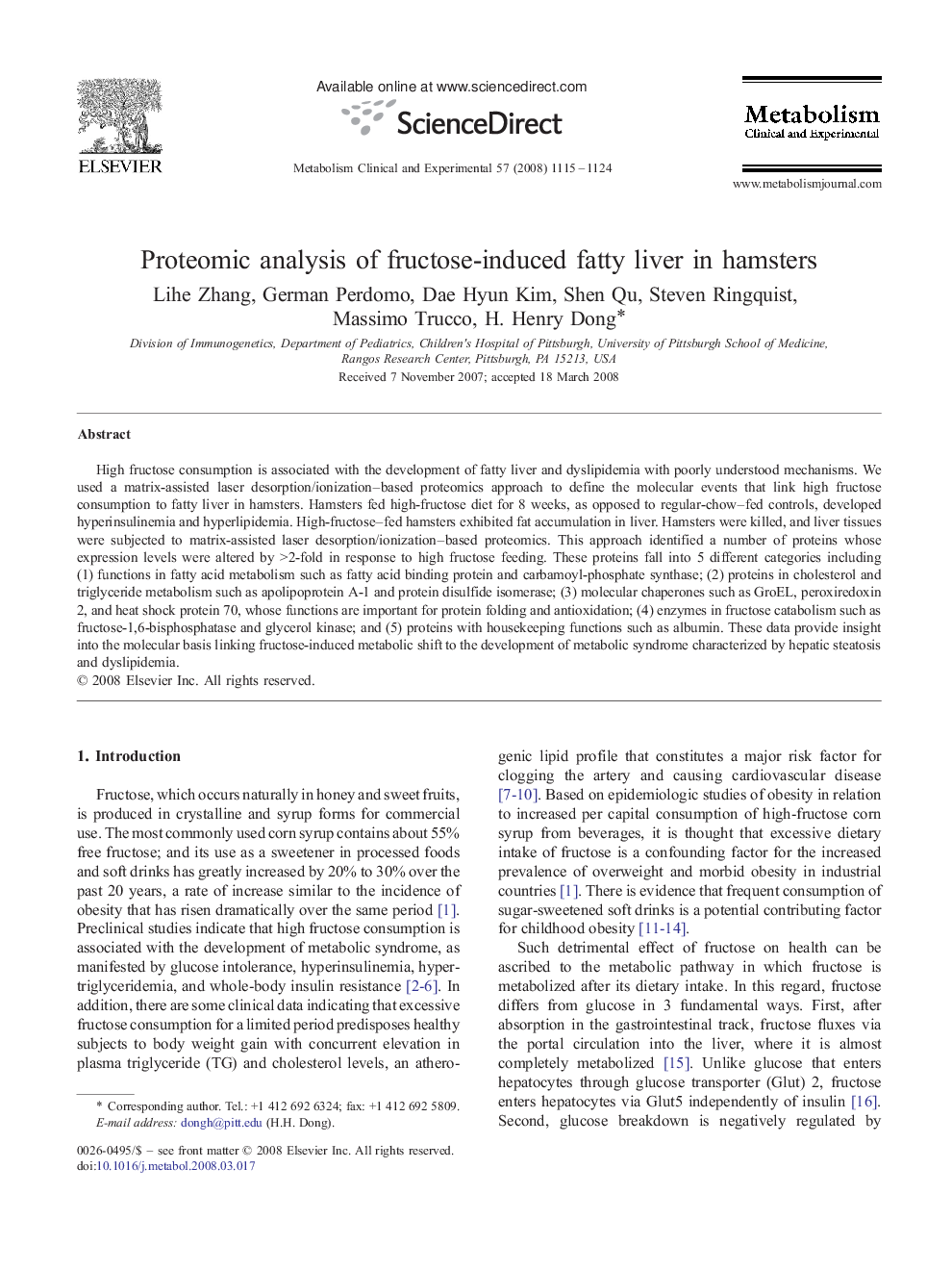| Article ID | Journal | Published Year | Pages | File Type |
|---|---|---|---|---|
| 2806953 | Metabolism | 2008 | 10 Pages |
High fructose consumption is associated with the development of fatty liver and dyslipidemia with poorly understood mechanisms. We used a matrix-assisted laser desorption/ionization–based proteomics approach to define the molecular events that link high fructose consumption to fatty liver in hamsters. Hamsters fed high-fructose diet for 8 weeks, as opposed to regular-chow–fed controls, developed hyperinsulinemia and hyperlipidemia. High-fructose–fed hamsters exhibited fat accumulation in liver. Hamsters were killed, and liver tissues were subjected to matrix-assisted laser desorption/ionization–based proteomics. This approach identified a number of proteins whose expression levels were altered by >2-fold in response to high fructose feeding. These proteins fall into 5 different categories including (1) functions in fatty acid metabolism such as fatty acid binding protein and carbamoyl-phosphate synthase; (2) proteins in cholesterol and triglyceride metabolism such as apolipoprotein A-1 and protein disulfide isomerase; (3) molecular chaperones such as GroEL, peroxiredoxin 2, and heat shock protein 70, whose functions are important for protein folding and antioxidation; (4) enzymes in fructose catabolism such as fructose-1,6-bisphosphatase and glycerol kinase; and (5) proteins with housekeeping functions such as albumin. These data provide insight into the molecular basis linking fructose-induced metabolic shift to the development of metabolic syndrome characterized by hepatic steatosis and dyslipidemia.
